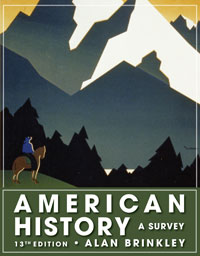1 A) they had to deal with a wild physical environment. B) they had to deal with Indian tribes as neighbors. C) they had to deal with religious disputes. D) they had to deal with an ethnically and racially diverse population. E) None of these answers is correct. 2 A) slaves. B) artisans. C) indentured servants. D) convicts. E) religious refugees. 3 A) weakening the traditional patriarchal family structure. B) creating significant labor shortages in New England. C) making it difficult for women to find husbands. D) keeping the birth rate low. E) increasing the importation of African slaves. 4 A) market square. B) meeting house. C) town meeting. D) small farm. E) family. 5 A) planters from Barbados came to Carolina. B) slavery was introduced in Georgia. C) Massachusetts and Rhode Island abolished slavery. D) the Royal Africa Company lost its monopoly. E) slavery was enshrined in the colonial legal systems. 6 A) the person's country of origin. B) the ancestry of the person's father. C) the ancestry of the person's mother. D) color. E) None of these answers is correct. 7 A) an effort by colonial governments to attract more white indentured servants by offering them a relatively high status. B) the deep seated racism that white settlers had brought with them. C) white fears of black resistance or even revolt. D) economic and social needs for an easily recruited and controlled labor force. E) a desire to civilize large numbers of African immigrants. 8 A) Scotch-Irish. B) Pennsylvania Dutch. C) French Huguenots. D) Scottish Highlanders. E) Germans. 9 A) They could be forced to do work that white laborers refused to do. B) They often came from rice-producing regions of Africa. C) They were more accustomed to the hot and humid climate. D) They could be counted on to work the fields without protest. E) They both were more accustomed to the hot and humid climate and could be counted on to work the fields without protest. 10 A) cold weather and rocky soil. B) the ease in getting crops to market. C) the lack of a substantial commercial economy in the middle colonies. D) the oversupply of single male workers. E) more temperate weather. 11 A) included the growth of an iron industry supported by Parliament. B) were primarily limited to local businesses and goods made for the home. C) were strengthened by a surplus of labor in the colonies. D) replaced crops as the major export items of the region. E) reflected British encouragement of the metals industry. 12 A) the lack of a commonly accepted currency. B) an insufficient number of ships to carry colonial goods. C) too many large companies in every colony. D) a small, unprofitable coastal trade. E) an abundance of toll roads. 13 A) staple system. B) triangular trade. C) middle passage. D) Atlantic highway. E) mercantile routes. 14 A) rough and relatively small. B) English country estates on a smaller scale. C) seats of an entrenched, landholding aristocracy. D) insignificant in the colonial economy. E) sites of political unrest. 15 A) were rigidly separated from whites. B) were widely scattered on small farms, seldom in contact with one another. C) often participated in various forms of organized resistance. D) began to develop a society and culture of their own. E) were well educated. 16 A) isolated farm. B) meeting house. C) town. D) plantation. E) extended family. 17 A) a general economic decline. B) the witchcraft trials. C) a decline in piety. D) the rise of the merchant class. E) an increase in piety. 18 A) They were trading centers. B) They were centers of industry. C) They were intellectual centers. D) They were centers of political activity. E) They were areas of few social distinctions. 19 A) less tolerant than their English counterparts. B) more tolerant than their English counterparts. C) more inclined to be members of an Anglican congregation. D) unconcerned about piety, especially in New England. E) concerned that one religion would become more prominent than another. 20 A) westward migration B) rise of towns C) corrupt ministers D) the importation of Enlightenment ideas E) All these answers are correct. 21 A) an effort to alert colonists to British efforts to control them politically. B) the way the Enlightenment influenced American education. C) the opening of new commercial opportunities in the West. D) the first great religious revival in America. E) an effort to alert colonists of a British religious plot. 22 A) occurred primarily at "dame schools." B) created a white male population more literate than those of European nations. C) allowed most white men to attend college. D) created a more literate female than male population. E) stressed religious piety. 23 A) the Bible B) colonial newspapers C) almanacs D) novels E) the published sermons of Jonathan Edwards 24 A) was limited to the universities. B) allowed for the derision of Franklin's experiment with electricity. C) led to the controversial and dangerous programs of inoculation against smallpox. D) was spurned by colonial religious leaders. E) was confined to aspiring inventors. 25 A) able to act independently of Parliament. B) controlled by the governor. C) free from class distinctions. D) a reflection of democracy in their respective colonies. E) the puppets of Parliament.





